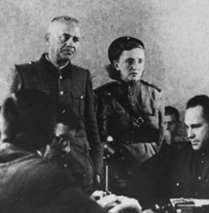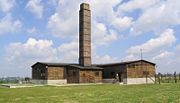War crimes
Thernes was married with six children in Trier before the Nazi German invasion of Poland. A member of the SS, Thernes served as the last administrative chief of KL Lublin / Majdanek. He was also in charge of food and slave labour administration, starvation rationing, and the maintenance of camp structures including the storage depot for property and valuables stolen from the Holocaust victims at the killing centers in Belzec, Sobibor, and Treblinka. [6]
Showers (left) and gas chambers (right) at
Majdanek The camp's original crematorium with reconstructed wooden building around it, Majdanek
c. 2006
Thernes was given the task of destroying the evidence of crimes against humanity and genocide, but ran out of time due to his ineptitude and lethargy. He was unable to destroy the chimneys and torch the camp before Soviet forces arrived at the camp outskirts. Thernes was caught by the Soviets and tried at the Majdanek Trials together with his assistant SS-Hauptsturmführer Wilhelm Gerstenmeier. He denied knowing anything, but the proceedings were swamped with testimonial proofs offered by eyewitnesses. During his trial, Thernes said "The people here were mostly Jews, they were not real prisoners of war. I am not a sadist!" [7]
He was executed on 3 December 1944 along with five other war criminals, close to the gas chambers and the Majdanek crematorium. [2] [4]

Nazi Germany used six extermination camps, also called death camps, or killing centers, in Central Europe during World War II to systematically murder over 2.7 million people – mostly Jews – in the Holocaust. The victims of death camps were primarily murdered by gassing, either in permanent installations constructed for this specific purpose, or by means of gas vans. The six extermination camps were Chełmno, Belzec, Sobibor, Treblinka, Majdanek and Auschwitz-Birkenau. Extermination through labour was also used at the Auschwitz and Majdanek death camps. Millions were also murdered in concentration camps, in the Aktion T4 or murdered directly on side.
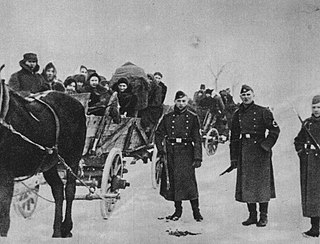
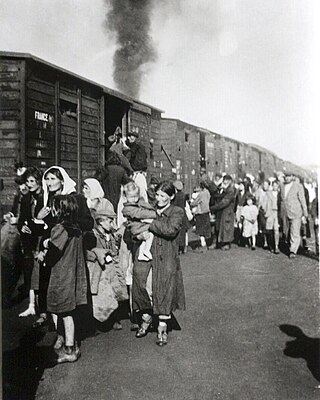
Operation Reinhard or Operation Reinhardt was the codename of the secret German plan in World War II to exterminate Polish Jews in the General Government district of German-occupied Poland. This deadliest phase of the Holocaust was marked by the introduction of extermination camps. The operation proceeded from March 1942 to November 1943; more than 1.47 million Jews were murdered in just 100 days from July to October 1942.

Operation Harvest Festival was the murder of up to 43,000 Jews at the Majdanek, Poniatowa and Trawniki concentration camps by the SS, the Order Police battalions, and the Ukrainian Sonderdienst on 3–4 November 1943.

Erich Mußfeldt also spelled Erich Muhsfeldt was a German war criminal.

The Trawniki concentration camp was set up by Nazi Germany in the village of Trawniki about 40 kilometres (25 mi) southeast of Lublin during the occupation of Poland in World War II. Throughout its existence the camp served a dual function. It was organized on the grounds of the former Polish sugar refinery of the Central Industrial Region, and subdivided into at least three distinct zones.

Feodor Fedorenko or Fyodor Federenko was a Soviet-Nazi collaborator and war criminal who served at Treblinka extermination camp in German occupied Poland during World War II. As a former Soviet citizen admitted to the United States under a DPA visa (1949), Fedorenko became a naturalized U.S. citizen in 1970. He was discovered in 1977 and denaturalized in 1981. Subsequently, he was deported to the USSR, sentenced to death there for treason and participating in the Holocaust. Fedorenko was executed in 1987.
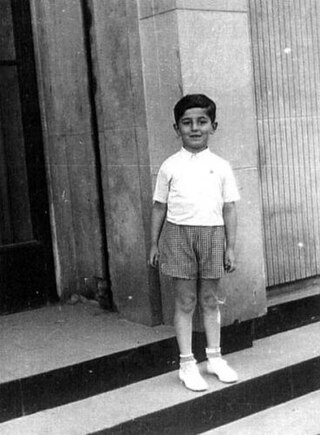
Henio Zytomirski was a Polish Jew born in Lublin, Poland, who was murdered at the age of 9 in a gas chamber at Majdanek concentration camp during the German Nazi occupation of Poland. Henio became an icon of the Holocaust, not only in Lublin but all over Poland. His life story became a part of the curriculum taught in the general education system in Poland. The "Letters to Henio" project has been held in Lublin since 2005. Henio Zytomirski is one of the heroes of "The Primer" permanent exhibition at barrack 53 of the Majdanek Museum, an exhibition dedicated to children held in the camp.
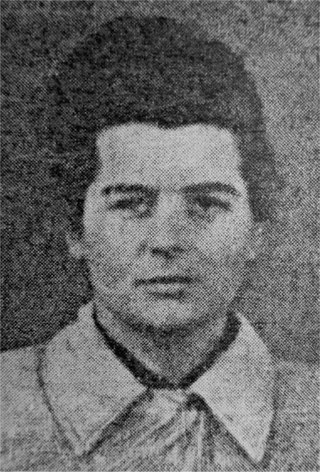
Else Lieschen Frida "Elsa" Ehrich was a convicted war criminal who served as a Schutzstaffel (SS) guard in Nazi concentration camps, including at Kraków-Płaszów and the Majdanek concentration camp during World War II. She was tried in Lublin, Poland at the Majdanek Trials and sentenced to death for war crimes. Ehrich was hanged on 26 October 1948.

Gertrud Elli Heise was a female guard and later, SS overseer at several concentration camps during the Second World War. Heise was born in Berlin, Germany. She was tried for war crimes in 1946.
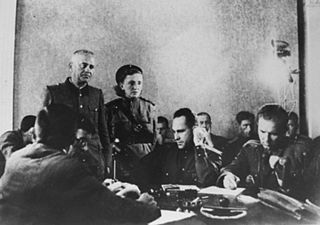
The Majdanek trials were a series of consecutive war-crime trials held in Poland and in Germany during and after World War II, constituting the overall longest Nazi war crimes trial in history spanning over 30 years. The first judicial trial of Majdanek extermination camp officials took place from November 27, 1944, to December 2, 1944, in Lublin, Poland. The last one, held at the District Court of Düsseldorf began on November 26, 1975, and concluded on June 30, 1981. It was West Germany's longest and most expensive trial, lasting 474 sessions.
Poniatowa concentration camp in the town of Poniatowa in occupied Poland, 36 kilometres (22 mi) west of Lublin, was established by the SS in the latter half of 1941, initially to hold Soviet prisoners of war following Operation Barbarossa. By mid-1942, about 20,000 Soviet POWs had perished there from hunger, disease and executions. The camp was known at that time as the Stalag 359 Poniatowa. Afterwards, the Stammlager was redesigned and expanded as a concentration camp to provide slave labour supporting the German war effort, with workshops run by the SS Ostindustrie (Osti) on the grounds of the prewar Polish telecommunications equipment factory founded in the late 1930s. Poniatowa became part of the Majdanek concentration camp system of subcamps in the early autumn of 1943. The wholesale massacre of its mostly Jewish workforce took place during the Aktion Erntefest, thus concluding the Operation Reinhard in General Government.
SS-HauptsturmführerWilhelm Gerstenmeier was a German member of the SS during World War II. He was convicted of atrocities committed at the Majdanek concentration camp in occupied Poland and hanged for war crimes on the grounds of the camp in 1944.

The Majdanek State Museum is a memorial museum and education centre founded in the fall of 1944 on the grounds of the Nazi Germany Majdanek death camp located in Lublin, Poland. It was the first museum of its kind in the world, devoted entirely to the memory of atrocities committed in the network of concentration, slave-labor, and extermination camps and subcamps of KL Lublin during World War II. The museum performs several tasks including scholarly research into the Holocaust in Poland. It houses a permanent collection of rare artifacts, archival photographs, and testimony.
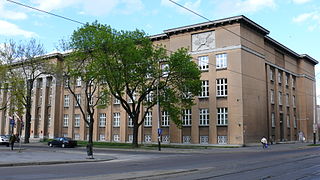
The Chełmno trials were a series of consecutive war-crime trials of the Chełmno extermination camp personnel, held in Poland and in Germany following World War II. The cases were decided almost twenty years apart. The first judicial trial of the former SS men – members of the SS-Sonderkommando Kulmhof – took place in 1945 at the District Court in Łódź, Poland. The subsequent four trials, held in Bonn, Germany, began in 1962 and concluded three years later, in 1965 in Cologne.

Karl Streibel was the second and last commander of the Trawniki concentration camp – one of the subcamps of the KL Lublin system of Nazi concentration camps in occupied Poland during World War II.

During World War II, Trawniki men were Central and Eastern European Nazi collaborators, consisting of either volunteers or recruits from prisoner-of-war camps set up by Nazi Germany for Soviet Red Army soldiers captured in the border regions during Operation Barbarossa launched in June 1941. Thousands of these volunteers served in the General Government territory of German-occupied Poland until the end of World War II. Trawnikis belonged to a category of Hiwis, Nazi auxiliary forces recruited from native subjects serving in various jobs such as concentration camp guards.
